Send your best messages along with a CERN illustration with these postcards.
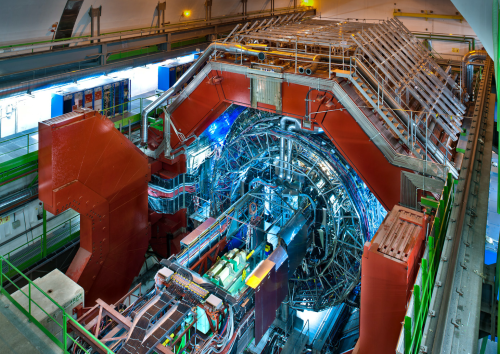
ALICE detector ALICE (A Large Ion Collider Experiment) is a detector dedicated to heavy-ion physics at the Large Hadron Collider (LHC). It is designed to study the physics of strongly interacting matter at extreme energy densities, where a phase of matter called quark-gluon plasma forms. Find out more about the ALICE experiment. |
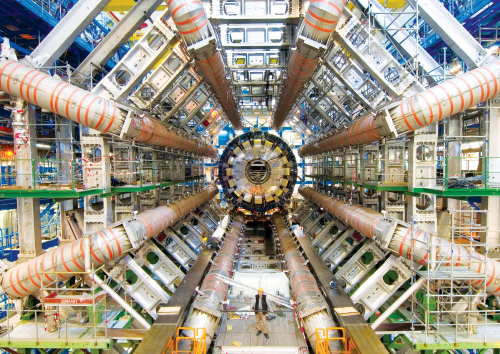
ATLAS detector ATLAS is one of two general-purpose detectors at the Large Hadron Collider (LHC). It investigates a wide range of physics, from the search for the Higgs boson to extra dimensions and particles that could make up dark matter. Although it has the same scientific goals as the CMS experiment, it uses different technical solutions and a different magnet-system design. Find out more about the ATLAS experiment. |
|
The Compact Muon Solenoid (CMS) is a general-purpose detector at the Large Hadron Collider (LHC). It has a broad physics programme ranging from studying the Standard Model (including the Higgs boson) to searching for extra dimensions and particles that could make up dark matter. Although it has the same scientific goals as the ATLAS experiment, it uses different technical solutions and a different magnet-system design. Find out more about the CMS experiment. |
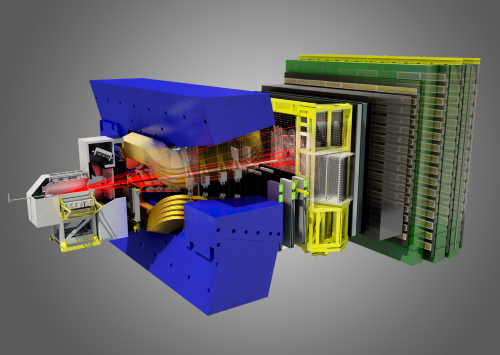
LHCb detector The Large Hadron Collider beauty (LHCb) experiment specializes in investigating the slight differences between matter and antimatter by studying a type of particle called the "beauty quark", or "b quark". Find out more about the LHCb experiment. |
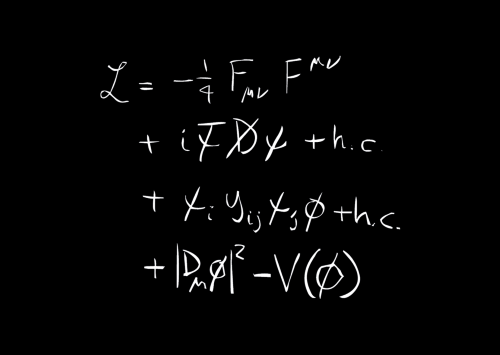
Lagrangian of the Standard Model of particle physics This formula is the mathematical representation of the Standard Model of particle physics, the theory that describes the elementary particles and the forces that bind them together. The first line describes the forces: electricity, magnetism, the strong nuclear force and the weak nuclear force. The second line shows how these forces act on the elementary particles of matter. The last two lines describe the Higgs boson and the mechanism by which particles acquire their mass. Find out more about the Standard Model. |
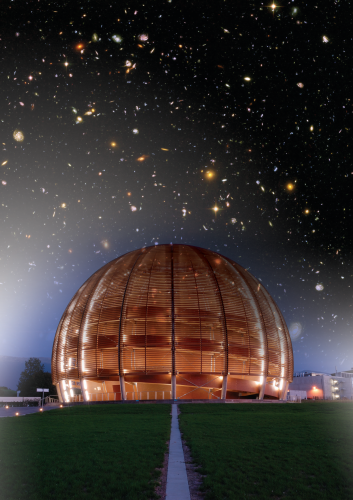
The Globe of Science and Innovation Initially built for the Swiss national exhibition Expo.02 and originally named Palais de l'Equilibre, the Globe was donated to CERN for its 50th anniversary in 2004 by the Swiss Confederation. Since then CERN has used the Globe as an outreach and communication tool. Find out more about the Globe of Science and Innovation. |
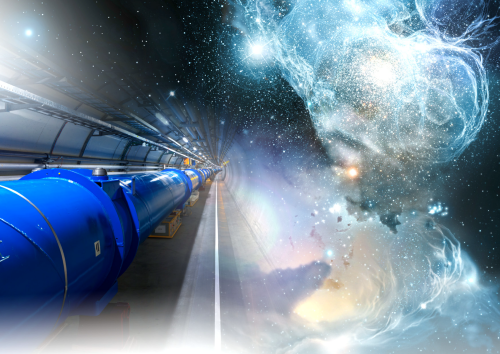
Artistic view of the LHC Tunnel and the Universe
The Large Hadron Collider (LHC) is the world’s largest and most powerful particle accelerator. It first started up on 10 September 2008, and remains the latest addition to CERN’s accelerator complex. The LHC consists of a 27-kilometre ring of superconducting magnets with a number of accelerating structures to boost the energy of the particles along the way. Find out more about the Large Hadron Collider. |
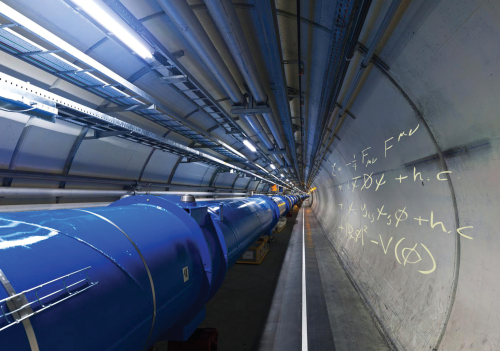
View of the LHC Tunnel with the formula The Large Hadron Collider (LHC) is the world’s largest and most powerful particle accelerator. It first started up on 10 September 2008, and remains the latest addition to CERN’s accelerator complex. The LHC consists of a 27-kilometre ring of superconducting magnets with a number of accelerating structures to boost the energy of the particles along the way. The formula is the mathematical representation of the Standard Model of particle physics, the theory that describes the elementary particles and the forces that bind them together. Find out more about the Large Hadron Collider. |
|
The Large Hadron Collider (LHC) is the world’s largest and most powerful particle accelerator. It first started up on 10 September 2008, and remains the latest addition to CERN’s accelerator complex. The LHC consists of a 27-kilometre ring of superconducting magnets with a number of accelerating structures to boost the energy of the particles along the way. Find out more about the Large Hadron Collider. |
|
This is a representation of a collision between two protons, made up of three quarks each. Such collisions happen hundred of millions of times per second in each of the Large Hadron Collider detectors. Find out more about the Large Hadron Collider. |

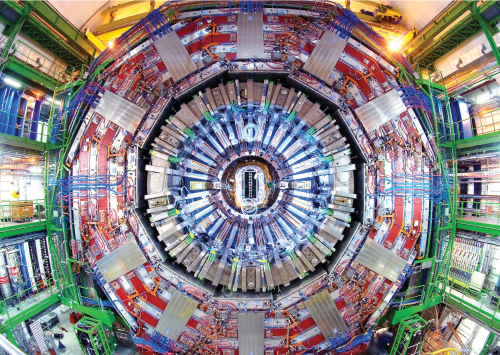 CMS detector
CMS detector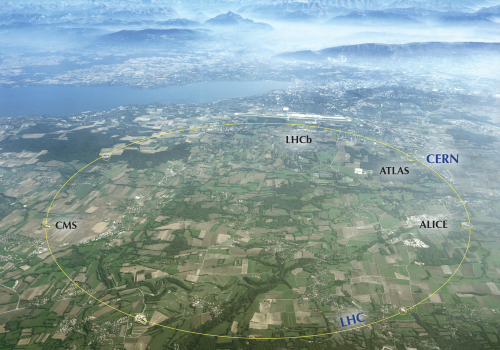 Aerial view of Geneva area with the position of the LHC Tunnel
Aerial view of Geneva area with the position of the LHC Tunnel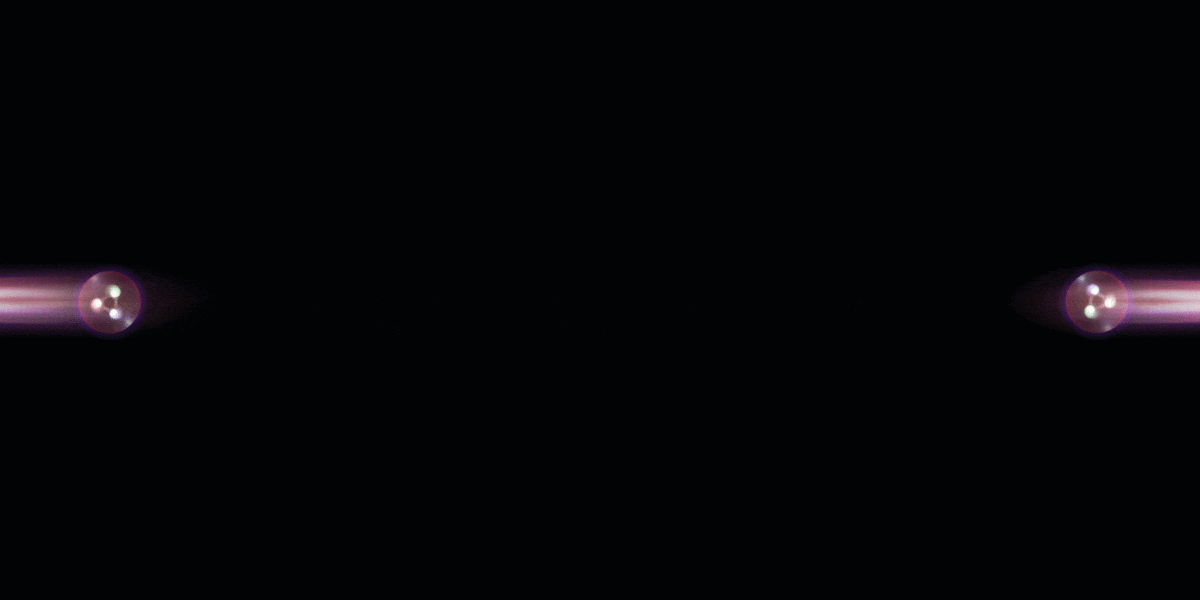 3D representation of a particle collision (animated card)
3D representation of a particle collision (animated card)